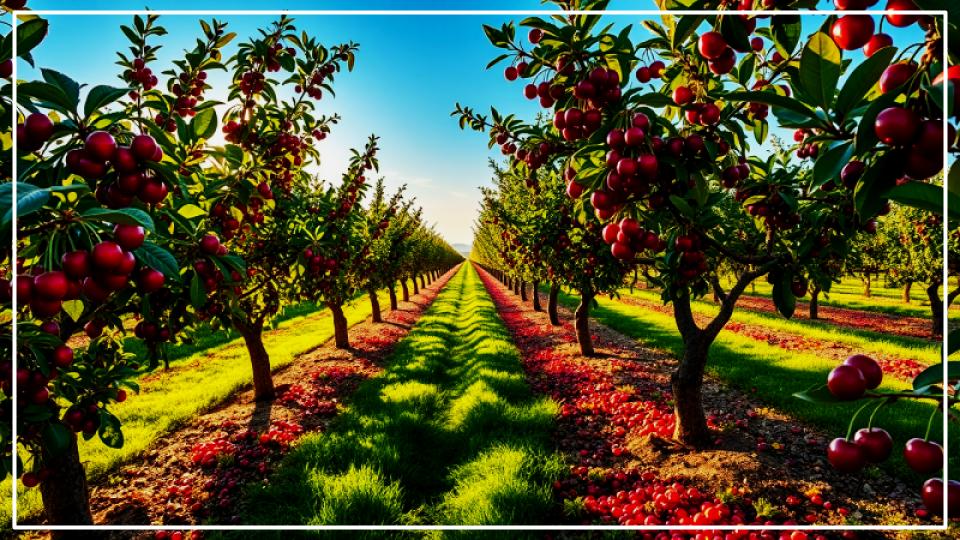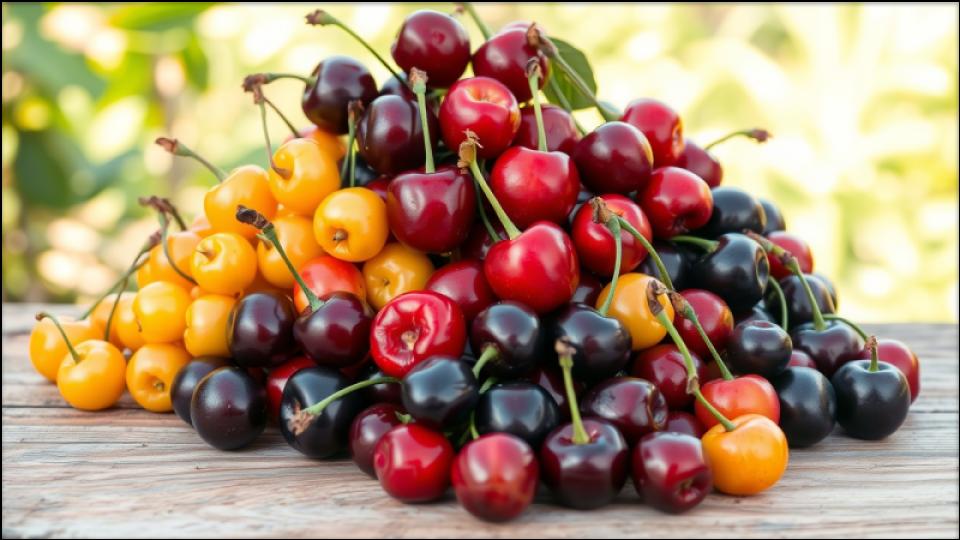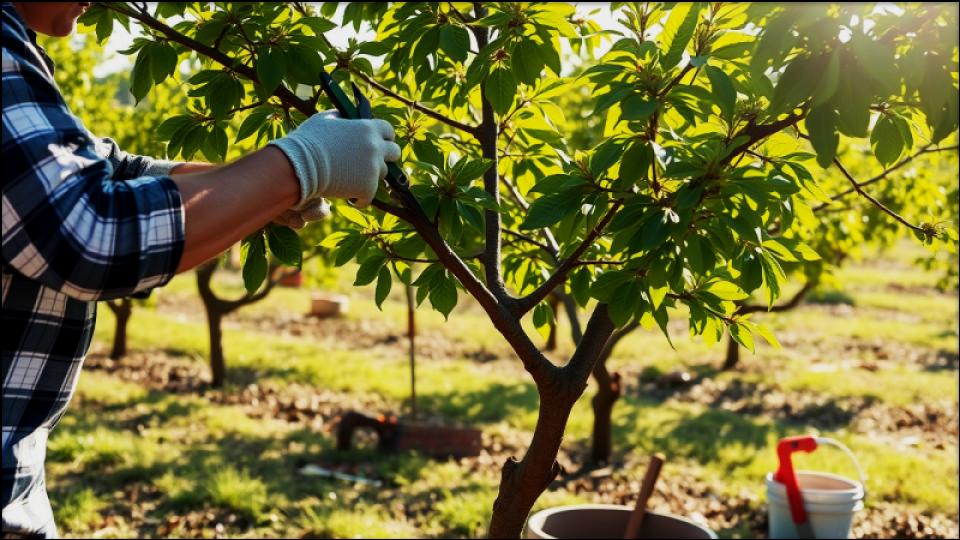
There is perhaps no fruit that captures the fleeting perfection of summer quite like the cherry. With their glossy skin, satisfying snap, and burst of sweet-tart juice, cherries are a true seasonal treasure. For centuries, we’ve baked them into pies, preserved them in jars, and, my personal favorite, eaten them straight from a bowl, still cool from the shade of the tree. But have you ever wondered where most of these ruby-red jewels come from? The answer might surprise you. This article unveils the country that produces the most cherries, taking you on a journey to its fertile orchards and then bringing that magic right back to your own garden with a complete guide to growing your own beautiful cherry trees.
Quick Tips for the Cherry Enthusiast
Here’s what you need to know about the world of cherries and how to bring them home.
- The World’s Cherry Capital: Turkey is the undisputed global leader in cherry production, with a history of cultivation stretching back thousands of years.
- Sweet vs. Sour: For eating fresh, choose sweet cherry varieties like Bing or Rainier. For pies and preserves, nothing beats the tangy flavor of a sour cherry like Montmorency.
- Sun and Soil are Key: Cherry trees require full sun (6-8 hours daily) and well-drained soil. Good drainage is non-negotiable for preventing root rot.
- Patience is a Virtue: Most newly planted cherry trees will take about three to five years to begin producing a significant harvest, but the wait is absolutely worth it.
The Country That Produces the Most Cherries
When we think of agricultural powerhouses, certain countries immediately come to mind for specific crops—Italy for olives, Brazil for coffee. But the global cherry market is dominated by a nation that bridges Europe and Asia: Turkey.
According to the latest data from the Food and Agriculture Organization of the United Nations (FAOSTAT), Turkey consistently ranks as the world’s top cherry producer by a significant margin. In recent years, it has produced over 600,000 metric tons of cherries annually, far surpassing other major players.
What makes Turkey such a perfect home for this beloved stone fruit? The answer lies in its unique geography and climate. The Anatolian peninsula, the heartland of modern Turkey, is one of the native regions for the sweet cherry (Prunus avium). Regions like the Aegean and Marmara provide the ideal “chill hours”—a period of cold winter temperatures—that cherry trees need to set fruit properly, followed by warm, dry summers that allow the cherries to ripen to perfection. In my own horticultural travels, seeing the vast, immaculate orchards in areas like Afyonkarahisar is a breathtaking experience that connects you directly to the fruit’s ancient origins.
A Global Tour of Other Cherry-Growing Powerhouses
While Turkey wears the crown, a diverse group of countries contributes to the global harvest, showcasing the wide adaptability of the cherry tree. Reviewing the cherry production by country reveals a fascinating map of cultivation.
- The United States: Primarily in the Pacific Northwest, states like Washington and Oregon are famous for their sweet cherries, including the iconic deep-red Bing and the blushing two-toned Rainier. Further east, Michigan is the capital of tart or sour cherry production, providing the majority of the fruit for America’s beloved cherry pies.
- Chile: As a major producer in the Southern Hemisphere, Chile plays a crucial role by supplying fresh cherries to the rest of the world during the Northern Hemisphere’s winter, a welcome treat during the holiday season.
- Uzbekistan & Iran: These nations in Central and Western Asia have long-standing traditions of cherry cultivation and are significant producers, contributing a vast quantity of fruit to regional and international markets.

From Global Orchards to Your Backyard: A Guide to Growing Sweet Cherries
Knowing where cherries come from is fascinating, but the real joy comes from harvesting them from your own tree. Growing sweet cherries is a rewarding project that can provide you with delicious fruit and a beautiful landscape feature for years to come. I’ve guided many home gardeners through this process, and the most common mistake I see is a lack of planning. A little preparation goes a long way.
Choosing the Perfect Cherry Varieties
Your first decision is the most important: which tree to plant. Cherry varieties are generally grouped into two categories:
- Sweet Cherries (Prunus avium): These are the ones we love to eat fresh. Most sweet cherries require a different variety nearby for cross-pollination. However, breeders have developed excellent self-fertile options like Stella or Lapins, which are perfect for smaller gardens where you might only have space for one tree. My go-to variety for beginners is often Lapins because it’s a reliable producer of large, dark red fruit and doesn’t need a partner tree.
- Sour Cherries (Prunus cerasus): Also called tart or pie cherries, these are too acidic for most people to enjoy fresh but are the absolute best for baking and preserves. Their bright, complex flavor holds up beautifully to heat. The most famous is Montmorency, and the great news is that nearly all sour cherries are self-fertile.
Site Selection & Planting: The Foundation of Success
Think of planting a tree as investing in your property’s future. To ensure your investment thrives:
- Find the Sun: Your cherry tree needs a spot that receives at least six to eight hours of direct sunlight per day. Morning sun is particularly beneficial as it helps dry dew off the leaves, preventing fungal diseases.
- Demand Good Drainage: Cherries despise “wet feet.” Their roots are highly susceptible to rot if left in standing water. If you have heavy clay soil, consider planting your tree in a raised bed or amending a large area with compost to improve its structure and drainage. A simple test I recommend is to dig a hole about a foot deep and fill it with water; if it doesn’t drain away within a few hours, the drainage is inadequate.
- Give It Space: Standard cherry trees can grow quite large (up to 35 feet tall!), but most varieties sold to home gardeners are grafted onto dwarfing or semi-dwarfing rootstock, keeping them at a more manageable 10 to 15 feet. Check the plant tag for its mature size and plan your spacing accordingly.
The Art of Care and Protecting Your Harvest
Once planted, your cherry tree needs consistent care to grow strong and produce well.
- Watering: Water your newly planted tree deeply every week unless you have significant rainfall. Once established, cherry trees are fairly drought-tolerant but will produce better fruit with consistent moisture, especially in the final weeks before harvest.
- Pruning: Annual pruning is essential for maintaining the tree’s shape, encouraging airflow (which reduces disease), and stimulating fruit production. The best time to prune sweet cherries is in late summer after fruiting has finished.
- Pests & Diseases: The biggest challenge for many home growers is protecting the fruit from birds. Draping the tree with bird netting as the cherries begin to ripen is the most effective solution. Keep an eye out for common issues like aphids or brown rot, which can often be managed with organic sprays like horticultural oil or neem oil.

Tools & Materials for Planting a Cherry Tree
- A healthy cherry tree: Purchase from a reputable nursery.
- Shovel or spade: For digging a hole that’s twice as wide as the root ball.
- Compost: To enrich the backfill soil.
- Mulch: A 2-3 inch layer of wood chips or straw to retain moisture and suppress weeds.
- Garden hose or watering can: For deep, thorough watering after planting.
A Sweet Reward Worth Waiting For
From the ancient hills of Anatolia to a sunny corner of your own yard, the story of the cherry is one of deep history and delicious reward. While Turkey may be the champion of commercial cherry production by country, the sweetest cherry you’ll ever taste is the one you pick yourself, warmed by the sun and bursting with flavor. Planting a cherry tree is an act of optimism—a belief in future seasons and the simple, profound joy of a homegrown harvest. With a little planning and care, you can create your own little orchard and enjoy this quintessential taste of summer for many years to come.
Read More
8 Plants That Will Ruin Your Lemon Tree’s Health—Avoid This Costly Error
